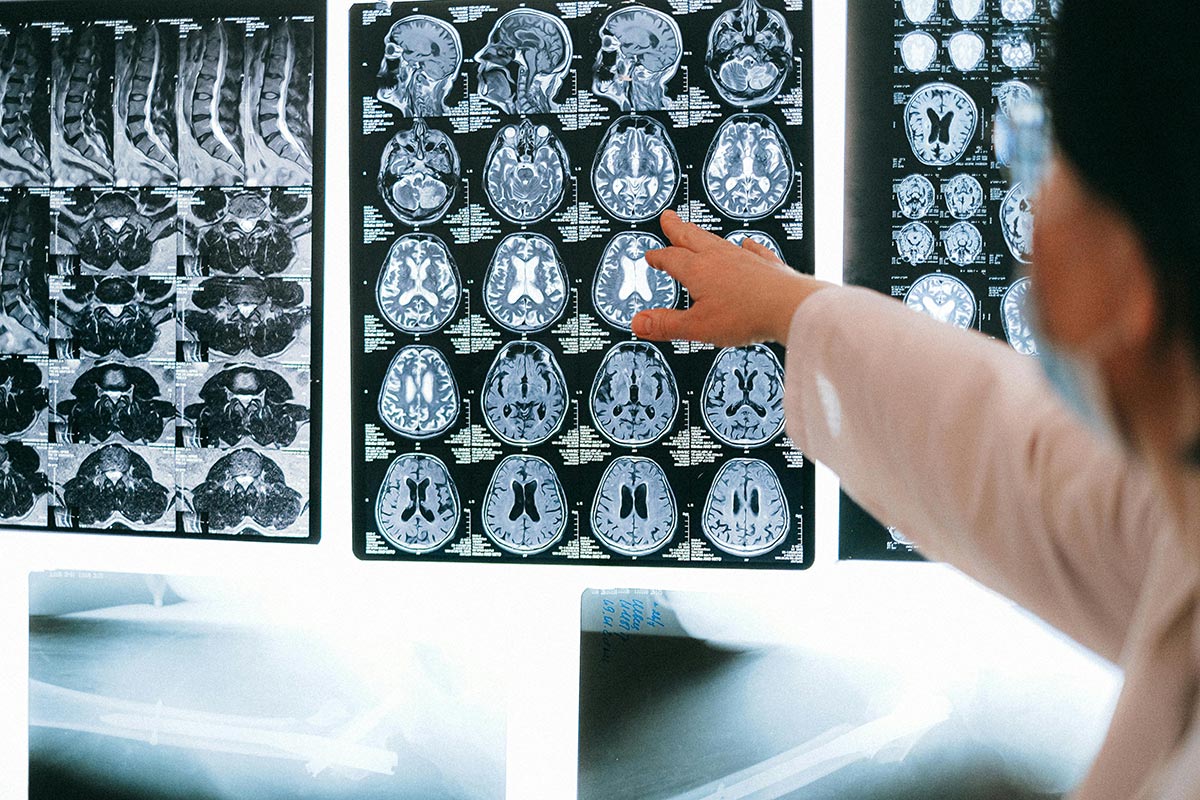

Eating Disorder Statistics Overview
Prevalence of Eating Disorders
Eating disorders are a significant public health concern affecting nearly 30 million Americans at some point in their lives, according to the National Eating Disorders Association. These disorders affect individuals from diverse backgrounds and demographics, including age, race, gender identity, and sexual orientation, as highlighted by ANAD's statistics.
The prevalence of specific eating disorders among adolescents has shown notable trends. Research suggests that the incidence of conditions such as anorexia nervosa and bulimia nervosa has increased over the last half-century. Among girls aged 15 to 19 years, the reported prevalence rate for anorexia nervosa stands at 0.48%, while approximately 1% to 5% fulfill the criteria for bulimia nervosa.
Eating DisorderPrevalence RateAnorexia Nervosa (Girls 15-19)0.48%Bulimia Nervosa (Adolescent Girls)1% - 5%
Impact Across Demographics
The impact of eating disorders extends across various demographics, transcending assumptions about age, size, and gender. Studies have indicated that societal factors, including social media influences, can greatly affect the likelihood of developing these conditions. For example, a study assessing 350 students found that 42% had probable eating disorders, with a strong correlation between social media use and these disorders [2].
Furthermore, puberty is identified as a particularly vulnerable period for individuals regarding the onset of eating disorders. Hormonal changes during this time may predispose young individuals to develop not only eating disorders but also co-occurring mental health conditions like depression and anxiety.
Understanding the prevalence and demographic impacts of eating disorders is crucial for developing targeted interventions and support systems. For more information on how societal and psychological factors influence these eating disorders, visit our articles on addiction to cell phone statistics & facts and binge drinking statistics & facts.
Types of Eating Disorders

Eating disorders are serious mental health conditions that often manifest in harmful eating behaviors and significant disturbances in body image. Understanding the different types of eating disorders is crucial to raising awareness and providing insights into their prevalence and consequences. This section outlines three common types: Anorexia Nervosa, Bulimia Nervosa, and Binge Eating Disorder.
Anorexia Nervosa
Anorexia Nervosa is characterized by an intense fear of gaining weight and a distorted body image, leading individuals to restrict their food intake significantly. This disorder involves two subtypes:
Anorexia can affect nearly every organ and body system, leading to complications such as endocrine and digestive issues, heart problems, and fertility concerns. It has the highest death rate of any psychiatric condition. Prompt treatment can reduce long-term health risks, with many complications potentially reversible [5].
Affected AreasImpactEndocrine SystemHormonal imbalancesDigestive SystemGastrointestinal problemsHeartHeart rate issues, potential failureFertilityMenstrual irregularitiesKidneysRisk of failure
Bulimia Nervosa
Bulimia Nervosa involves episodes of binge eating followed by compensatory behaviors to prevent weight gain. These behaviors can include self-induced vomiting, excessive use of laxatives, fasting, or engaging in excessive exercise.
Individuals with bulimia often experience feelings of shame and guilt regarding their eating habits. Because of the cycles of consumption and purging, this disorder can lead to severe health consequences, such as electrolyte imbalances, gastrointestinal problems, and dental erosion due to stomach acid exposure.
Health IssuesDescriptionElectrolyte ImbalancesCan lead to heart arrhythmiasGastrointestinal IssuesDamage to the esophagus and stomachDental HealthEnamel erosion, decay from stomach acid
Binge Eating Disorder
Binge Eating Disorder (BED) is characterized by recurrent episodes of eating large quantities of food, often accompanied by feelings of loss of control and distress. Unlike bulimia, individuals with BED do not engage in regular purging behaviors.
This disorder is associated with emotional distress, social withdrawal, and a higher risk of obesity. Individuals with BED may experience significant physical health complications, including diabetes and cardiovascular diseases. Treatment often involves therapy and nutritional counseling.
Health RisksDescriptionObesityIncreased risk of chronic health conditionsDiabetesHigher likelihood of Type 2 diabetes onsetPsychological IssuesIncreased rates of anxiety and depression
Understanding these types of eating disorders is a crucial step in addressing the associated eating disorder statistics & facts. Comprehensive awareness can facilitate better prevention, treatment, and support for individuals affected by these conditions. For more information on how to support those with eating disorders, consider reading our article on hospital statistics & facts.
Factors Contributing to Eating Disorders

Eating disorders stem from a variety of complex factors, including societal pressures and psychological influences. Understanding these factors is essential for comprehending the prevalence of these disorders.
Societal Pressures
Societal expectations and media influence play a significant role in the development of eating disorders. Several studies have shown a positive correlation between exposure to beauty and fashion media and increased weight concerns in girls. For instance, the introduction of Western television to Fijian schoolgirls led to a rise in disordered eating indicators after prolonged exposure [1].
Further research among undergraduate college students highlighted that media exposure predicted disordered eating symptoms, body dissatisfaction, and a drive for thinness, particularly among women. In this context, the pervasive depiction of idealized body types in media can create unattainable standards, leading individuals to resort to unhealthy eating behaviors as a means to achieve those ideals.
Media Exposure TypeImpact on Eating DisordersBeauty MagazinesIncreased weight concernsWestern TelevisionGreater prevalence of disordered eatingSocial MediaEndorsement of dieting and thinness
Psychological Factors
Psychological aspects also contribute significantly to the development of eating disorders. Chronic low self-esteem is identified as a major factor, alongside bullying and co-occurring psychiatric disorders such as substance use disorder. These issues can lead to negative body image and unhealthy relationships with food.
The interplay of these psychological factors creates a challenging environment for individuals, making them more vulnerable to disordered eating patterns. Biological and environmental influences further complicate this picture, affecting individuals across various demographics, regardless of age, gender, or race, albeit with historical research primarily focusing on white females [6].
By recognizing these societal and psychological pressures, better awareness and education can be fostered, helping to mitigate the impact of eating disorders in affected populations. For more detailed statistics and information on this topic, refer to eating disorder statistics & facts.
Risks and Consequences of Eating Disorders
Eating disorders can lead to a wide range of severe physical health complications as well as significant emotional and social challenges. Understanding these risks is crucial for recognizing the impact that these disorders can have on individuals.
Physical Health Complications
Eating disorders can affect nearly every organ and body system, leading to various health issues. Anorexia, in particular, has the highest death rate of any psychiatric condition, as highlighted in a 2020 review. Here are some of the physical complications associated with anorexia and other eating disorders:
ComplicationDescriptionEndocrine IssuesHormonal imbalances affecting growth, metabolism, and fertility.Digestive ProblemsSevere constipation and delayed gastric emptying.Heart IssuesRisk of arrhythmias, diminished heart function, and other cardiac problems.Nutritional DeficienciesLack of essential nutrients such as calcium and vitamin D, leading to osteoporosis.Kidney IssuesImpaired kidney function due to dehydration and nutrient deficiencies.
Prompt treatment and continued support can significantly reduce these long-term health risks, with many consequences being reversible. For further insights, refer to our sources on anorexia-related health effects at Medical News Today.
Emotional and Social Challenges
The psychological impact of eating disorders extends beyond physical complications. Individuals struggling with anorexia and bulimia often face emotional and social difficulties that can disrupt their quality of life. Common challenges include:
Awareness of these risks and consequences is critical in addressing the broader issue of eating disorders. For more general statistics and information, consult our article on eating disorder statistics & facts.
Treatment and Recovery
Psychotherapies and Medication
Treatment plans for eating disorders are individualized, addressing the specific needs of each patient. Common psychotherapies include cognitive behavioral therapy (CBT) and family-based therapy. CBT helps individuals identify and change harmful thought patterns related to food and body image. Family-based therapy involves the support of family members in the recovery process and can be particularly effective for younger individuals. Medication may also be included as part of the treatment plan; antidepressants and antipsychotics are frequently prescribed to help manage symptoms. Early intervention is crucial to prevent associated risks like suicide and medical complications.
Type of TreatmentDescriptionCognitive Behavioral Therapy (CBT)Focuses on changing negative thoughts and behaviors related to eating and body image.Family-Based TherapyInvolves family members in the treatment process for younger individuals.MedicationAntidepressants or antipsychotics may be prescribed to manage symptoms.
Supportive Interventions
Supportive interventions play an essential role in the recovery process. Individuals struggling with eating disorders can benefit from seeking help from medical professionals, therapists, or hotlines. These resources provide guidance and support as individuals navigate their recovery journey. Research shows that individuals with chronic low self-esteem, bullying experiences, and co-occurring psychiatric disorders like substance use disorder are particularly at risk for developing eating disorders.
Building a solid support network can significantly enhance recovery efforts. Support groups allow individuals to connect with others who understand their struggles, fostering a sense of community and belonging. Additional attention is also required to meet the mental health needs of vulnerable populations such as LGBTQIA2S+ youth, who are shown to be at higher risk for eating disorders. Addressing both eating disorders and the associated influences, such as substance use among college students (International Journal of Eating Disorders), highlights the need for comprehensive health interventions.
Recovery is possible, and with the right treatment and support, individuals can achieve healthier lifestyles and improved well-being.
Addressing Disparities in Eating Disorder Care
Disparities Among BIPOC Individuals
Research indicates that BIPOC (Black, Indigenous, and People of Color) individuals face significant disparities in the diagnosis and treatment of eating disorders. Factors such as weight status, race/ethnicity, socioeconomic background, and sex can influence the likelihood of receiving appropriate care. For instance, in college settings, BIPOC students often encounter barriers that contribute to inequalities in healthcare access, which can impede their ability to get the help they need for eating disorders [9].
Demographic FactorsImpact on Diagnosis and TreatmentWeight StatusDisproportionate diagnoses for those outside traditional body normsRace/EthnicityCultural stigma and lack of representation in treatmentSocioeconomic BackgroundLimited access to resources and careSexGender biases affecting treatment approaches
Efforts to increase awareness and reduce these disparities are essential in ensuring equitable healthcare for all individuals, regardless of their background.
Vulnerabilities in LGBTQIA2S+ Youth
LGBTQIA2S+ youth represent a particularly vulnerable population when it comes to eating disorders. Research studies highlight that this group is at an increased risk for developing eating disorders compared to their heterosexual peers. The unique challenges they face, such as societal stigma and discrimination, can exacerbate mental health issues and lead to unhealthy coping mechanisms, including disordered eating [8].
VulnerabilitiesStatisticsIncreased Risk of Eating DisordersLGBTQIA2S+ youth are more likely to develop eating disorders compared to heterosexual youth.Mental Health NeedsHigher incidences of depression and anxiety related to their identity.DiscriminationExperiences of bullying and discrimination contribute to emotional distress and body image issues.
Addressing these vulnerabilities requires targeted interventions that take into account the specific needs of LGBTQIA2S+ youth, fostering an environment that promotes mental well-being and healthy body image. By recognizing these disparities, stakeholders can work towards more effective prevention and treatment strategies within the realm of eating disorder care.
References
[2]:
[3]:
[4]:
[5]:
[6]:
[7]:
[8]:
[9]:
.svg)





